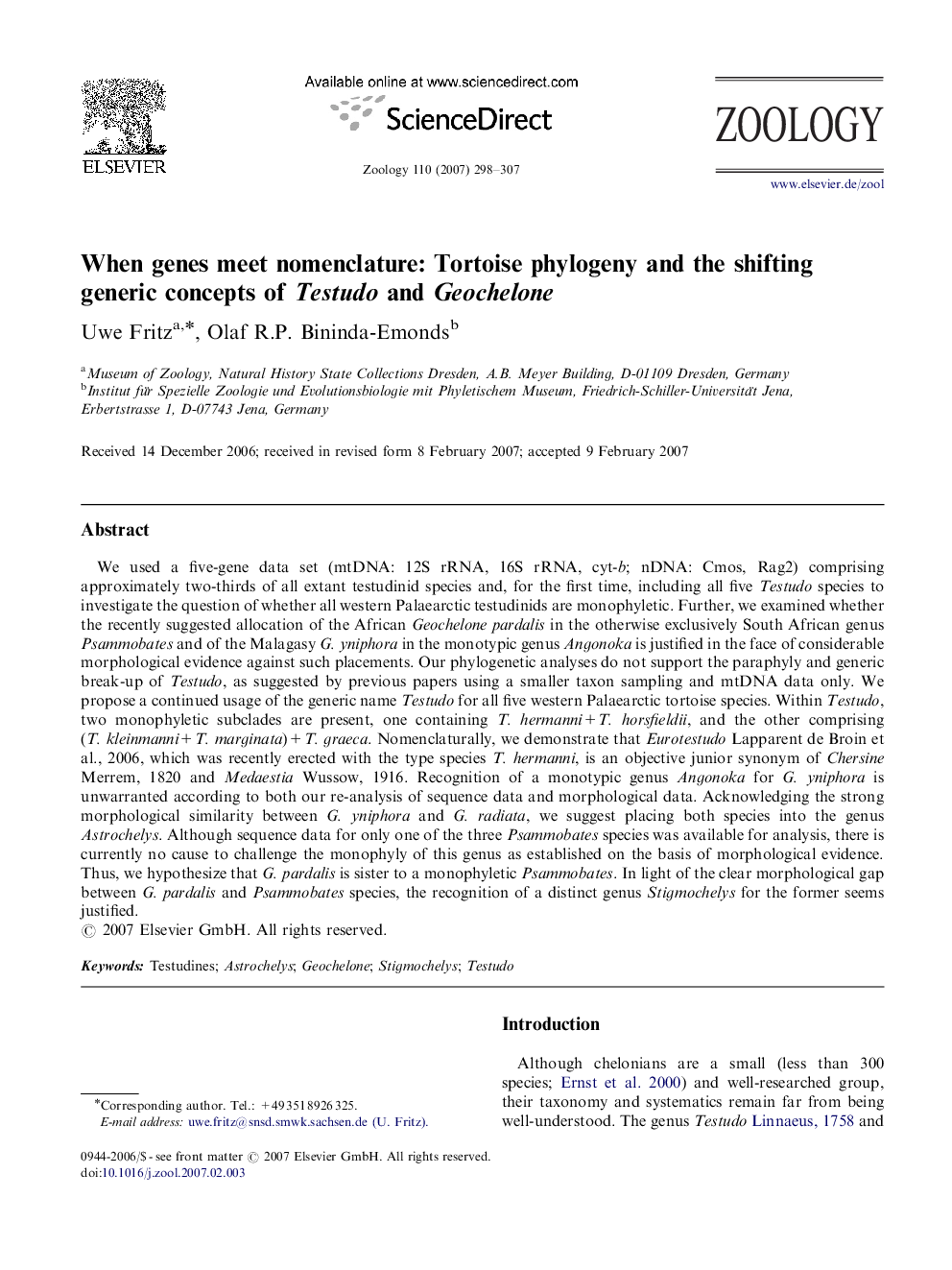| Article ID | Journal | Published Year | Pages | File Type |
|---|---|---|---|---|
| 2791436 | Zoology | 2007 | 10 Pages |
We used a five-gene data set (mtDNA: 12S rRNA, 16S rRNA, cyt-b; nDNA: Cmos, Rag2) comprising approximately two-thirds of all extant testudinid species and, for the first time, including all five Testudo species to investigate the question of whether all western Palaearctic testudinids are monophyletic. Further, we examined whether the recently suggested allocation of the African Geochelone pardalis in the otherwise exclusively South African genus Psammobates and of the Malagasy G. yniphora in the monotypic genus Angonoka is justified in the face of considerable morphological evidence against such placements. Our phylogenetic analyses do not support the paraphyly and generic break-up of Testudo, as suggested by previous papers using a smaller taxon sampling and mtDNA data only. We propose a continued usage of the generic name Testudo for all five western Palaearctic tortoise species. Within Testudo, two monophyletic subclades are present, one containing T. hermanni+T. horsfieldii, and the other comprising (T. kleinmanni+T. marginata)+T. graeca. Nomenclaturally, we demonstrate that Eurotestudo Lapparent de Broin et al., 2006, which was recently erected with the type species T. hermanni, is an objective junior synonym of Chersine Merrem, 1820 and Medaestia Wussow, 1916. Recognition of a monotypic genus Angonoka for G. yniphora is unwarranted according to both our re-analysis of sequence data and morphological data. Acknowledging the strong morphological similarity between G. yniphora and G. radiata, we suggest placing both species into the genus Astrochelys. Although sequence data for only one of the three Psammobates species was available for analysis, there is currently no cause to challenge the monophyly of this genus as established on the basis of morphological evidence. Thus, we hypothesize that G. pardalis is sister to a monophyletic Psammobates. In light of the clear morphological gap between G. pardalis and Psammobates species, the recognition of a distinct genus Stigmochelys for the former seems justified.
